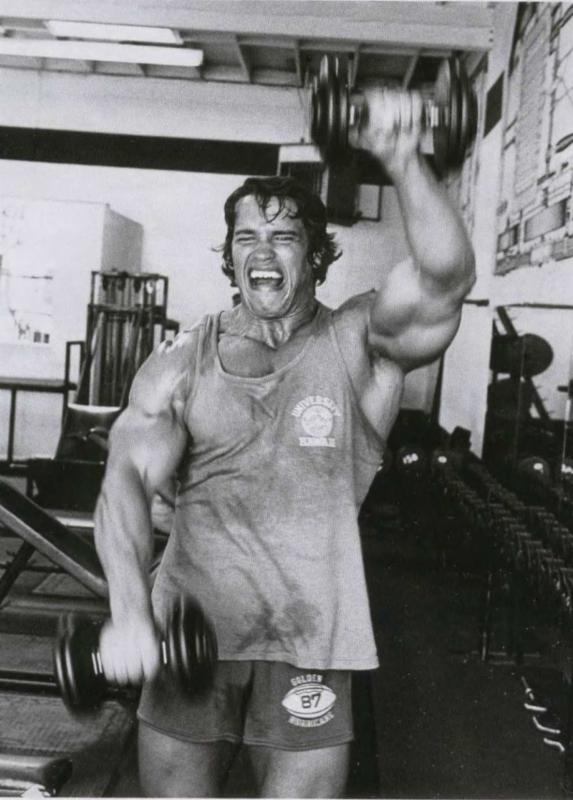April 20, 2016
By John Cruz, personal trainer
We live in a time where information easily comes to us, with no need to do real research or buy a big book to learn and understand a particular field or topic. Despite this amazing occurrence, there’s still plenty of misinformation being widespread by the media, and more and more folks “learning” from self-proclaimed experts and third party-broken telephone type of facts. Take for example, one of the most frequently asked questions in the last 100 years (I’m only slightly exaggerating):
 To gain more muscle mass, should I use high weight and less reps, and to get toned and ripped, less weight and more reps?
To gain more muscle mass, should I use high weight and less reps, and to get toned and ripped, less weight and more reps?
I was recently asked this, so I’ll share my answer to clarify or help you better understand the relationship between repetition and load (weight to be lifted).
I’ll try for a brief answer but the truth is, it’s really not that simple. I’m barely skimming the surface here. For the majority of peoplegetting “ripped” it’s more a function of diet than the type of work performed.
Building more and more muscle requires not just increasing the weight but eating more as well.The word “toned” is not deemed an accurate terminology amongst professional coaches and exercise scientists. In popular culture, however, it refers to a low level of muscular development that’s visible but it’s not “bulky” or bodybuilder type. So to be toned you still have to build some muscle In either case, “tone” or “bulk” requires periodic changes in intensity, exercise selection and execution, in order to ensure ongoing adaptation and prevent accommodation or stagnation if you will.
 So low reps or high reps, you still need to up the weight on your chosen rep scheme to make progress. There is an inverse relationship between intensity and duration. All things being equal, you either work hard for a short time or work light for a long time, but you can’t do both. As an example outside of lifting, take sprinting and long distance running as comparison. You can’t sprint your way through a marathon, and you can’t pace your way to a 100m record. Also, take a look at the difference in physique. To confuse you even more (not really but bare with me), you can get stronger and more powerful without putting on tons of muscle as athletes with weight class requirements often do.
So low reps or high reps, you still need to up the weight on your chosen rep scheme to make progress. There is an inverse relationship between intensity and duration. All things being equal, you either work hard for a short time or work light for a long time, but you can’t do both. As an example outside of lifting, take sprinting and long distance running as comparison. You can’t sprint your way through a marathon, and you can’t pace your way to a 100m record. Also, take a look at the difference in physique. To confuse you even more (not really but bare with me), you can get stronger and more powerful without putting on tons of muscle as athletes with weight class requirements often do. Still With me? So unless you have a defined goal of either getting the strongest possible, the most powerful possible, the biggest possible, or a combination of these, you’re best bet is to train for strength sometimes (low reps/higher weight), muscular and short term endurance other times (moderate or medium range reps/weight and sprints), and some quality mixed days with higher reps and either sprints or mid-duration cardio bouts sprinkled on top.Whatever your focus, it all boils down in the end to having a smart training program, an educated strategy of execution, and/or a great coach that can guide you properly. This applies as well, to a nourishing and supportive diet that allows you to achieve the results you want.
Still With me? So unless you have a defined goal of either getting the strongest possible, the most powerful possible, the biggest possible, or a combination of these, you’re best bet is to train for strength sometimes (low reps/higher weight), muscular and short term endurance other times (moderate or medium range reps/weight and sprints), and some quality mixed days with higher reps and either sprints or mid-duration cardio bouts sprinkled on top.Whatever your focus, it all boils down in the end to having a smart training program, an educated strategy of execution, and/or a great coach that can guide you properly. This applies as well, to a nourishing and supportive diet that allows you to achieve the results you want.Understanding your particular needs and having a clear goal are the first steps towards finding the right solution for you. Always educating yourself on how to achieve your goals effectively, efficiently, and safely.
Always Strong!
JC













